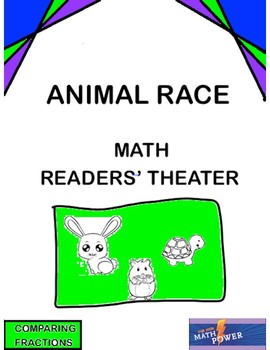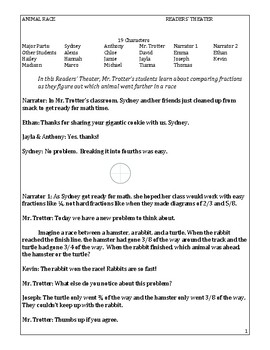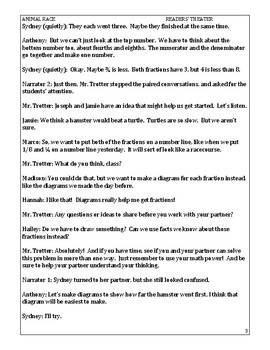Use Your Math Power
20 Followers
Grade Levels
3rd - 5th
Subjects
Resource Type
Standards
CCSS3.NF.A.1
CCSS3.NF.A.2
CCSS3.NF.A.2a
CCSS3.NF.A.3d
CCSS4.NF.A.1
Formats Included
- PDF
Pages
11 pages
Use Your Math Power
20 Followers
Description
Do many of your students have trouble asking questions about concepts and strategies they don’t understand? Do many students struggle to understand the meaning of fractions?
In Animal Race, students see children learn to help each other ask questions and work through confusions in math together as they strengthen their growth mindset. As your students take on the roles in this script, they will see strategies they can use to compare fractions such as model drawing, drawing number lines and using their understanding of the meaning of numerators and denominators.
This script has 19 parts.
Total Pages
11 pages
Answer Key
N/A
Teaching Duration
N/A
Report this resource to TPT
Reported resources will be reviewed by our team. Report this resource to let us know if this resource violates TPT’s content guidelines.
Standards
to see state-specific standards (only available in the US).
CCSS3.NF.A.1
Understand a fraction 1/𝘣 as the quantity formed by 1 part when a whole is partitioned into 𝘣 equal parts; understand a fraction 𝘢/𝑏 as the quantity formed by 𝘢 parts of size 1/𝘣.
CCSS3.NF.A.2
Understand a fraction as a number on the number line; represent fractions on a number line diagram.
CCSS3.NF.A.2a
Represent a fraction 1/𝘣 on a number line diagram by defining the interval from 0 to 1 as the whole and partitioning it into 𝘣 equal parts. Recognize that each part has size 1/𝘣 and that the endpoint of the part based at 0 locates the number 1/𝘣 on the number line.
CCSS3.NF.A.3d
Compare two fractions with the same numerator or the same denominator by reasoning about their size. Recognize that comparisons are valid only when the two fractions refer to the same whole. Record the results of comparisons with the symbols >, =, or <, and justify the conclusions, e.g., by using a visual fraction model.
CCSS4.NF.A.1
Explain why a fraction 𝘢/𝘣 is equivalent to a fraction (𝘯 × 𝘢)/(𝘯 × 𝘣) by using visual fraction models, with attention to how the number and size of the parts differ even though the two fractions themselves are the same size. Use this principle to recognize and generate equivalent fractions.





